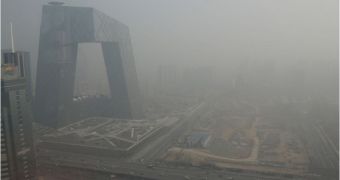Beijing is already famous for its exceedingly thick smog, as well as for its massive air pollution levels. However, until now, the exact microbial composition of the smog was not known. In a new study, Chinese scientists conducted genome analysis on smog samples, and identified no less than 1,300 species of microbes in the thick, soupy material.
The exact health impact of Beijing smog has never been fully investigated. Until now, scientists did not even know the full extent and diversity of microbes made airborne by the smog. The new results raise massive public health issues for the capital of the most populous country on Earth.
On the bright side of things, the new study has determined that the vast majority of these microbes are benign to humans. But the news is not all good – the team has also identified several species that can lead to allergies and respiratory problems in humans.
These organisms could potentially lead to massive asthma outbreaks, and may eventually to a higher incidence of lung cancer, Nature News reports. People with a weakened immune system, seniors and children are, and will remain, the most severely affected.
The new study is “a proof of principle that one can extract and identify these microbes at the species level. It adds to our understanding of what we inhale every day,” says Tsinghua University biologist Ting Zhu, who was a part of the team that conducted the research.
A total of 14 air samples were analyzed for the study. Scientists collected two samples daily for 7 days, and then divided the microbes in these batches according to size – smaller than 2.5 micrometers (PM2.5), and between 2.5 and 10 micrometers in diameter.
Results were very concerning. The team found that the concentrations of PM2.5 particles on some days exceeded 500 micrograms per cubic meter, a value some 20 times above the maximum safe exposure level recommended by the UN World Health Organization.
Since the study was conducted, the problem has gotten even worse in Beijing. In January, PM2.5 concentrations of up to 600 micrograms per cubic meter were recorded. This increase occurred in spite of efforts made by Chinese authorities to alleviate the ever-present problem of pollution.
China is currently the fastest-growing economy in the world, and the lead polluter worldwide. The country is infamous for producing pollution hazes so widespread that they appear massive even when photographed from space.

 14 DAY TRIAL //
14 DAY TRIAL //